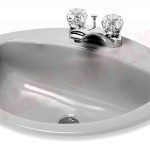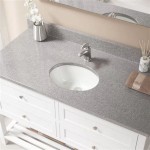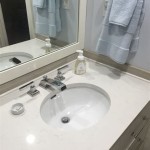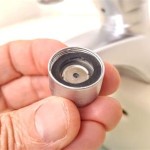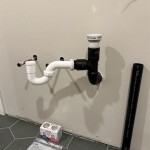Fairmont Bathroom Vanities: Optimizing Small Spaces with 300mm Designs
In the ever-evolving landscape of interior design, the bathroom remains a crucial space requiring both functionality and aesthetic appeal. The selection of bathroom fixtures, particularly vanities, plays a significant role in achieving this balance. As urban living increasingly embraces compact designs, the demand for space-saving solutions has surged. Fairmont Bathroom Vanities, renowned for quality craftsmanship and innovative designs, offers a compelling range of 300mm vanities specifically tailored for bathrooms with limited dimensions.
This article provides a comprehensive overview of Fairmont's 300mm bathroom vanity options, exploring their key features, design considerations, material choices, and installation nuances. The focus is to equip homeowners, interior designers, and contractors with the necessary insights to make informed decisions when selecting a vanity for a small bathroom or powder room.
A 300mm vanity, measuring approximately 11.8 inches in width, represents an optimal solution for exceedingly small bathrooms or powder rooms where space is at a premium. Traditional vanities often prove impractical in such environments, leading to cramped conditions and compromised functionality. The compact footprint of a 300mm vanity allows for the inclusion of a washbasin and storage, without overwhelming the available space.
Fairmont Bathroom Vanities recognizes the importance of maximizing utility without sacrificing style. Their 300mm vanity collections are meticulously designed to integrate seamlessly into various bathroom aesthetics, offering a range of styles from contemporary minimalism to classic elegance. This attention to detail ensures that even within a confined space, the vanity contributes to the overall design harmony of the bathroom.
Key Considerations for Selecting a 300mm Vanity
Choosing the right 300mm vanity requires careful consideration of several factors. These factors influence not only the functionality and longevity of the vanity but also its compatibility with the existing bathroom layout and design scheme.
1. Dimensions and Layout: Prior to selecting a vanity, thoroughly measure the available space in the bathroom. Account for plumbing locations, door swing clearances, and any other obstructions that might affect the vanity's placement. A 300mm vanity, while compact, still requires adequate clearance for comfortable use. Consider the depth of the vanity as well, as some models may extend further from the wall than others. Accurately portraying the layout using measurement tools will help homeowners select the best vanity for their bathroom.
2. Storage Needs: Despite their compact size, 300mm vanities can offer valuable storage solutions. Consider the type of storage required. Some vanities feature a single cabinet, while others incorporate drawers or open shelving. Evaluate personal storage needs and select a vanity that provides sufficient space for toiletries, cleaning supplies, and other bathroom essentials. Think about the long-term utility of the vanity when making your storage considerations.
3. Material and Finish: The material and finish of the vanity should complement the overall aesthetic of the bathroom and offer resistance to moisture and humidity. Fairmont Bathroom Vanities offers a selection of materials, including solid wood, MDF (Medium-Density Fiberboard) with moisture-resistant coatings, and durable laminates. Each material offers varying levels of durability, aesthetic appeal, and cost. The finish should be water-resistant and easy to clean, ensuring longevity and maintaining a pristine appearance. Consider the style of your bathroom compared to the material and finishes that Fairmont offers. This will help solidify the decision of which unit to purchase.
4. Sink Type: The sink is an integral part of the vanity unit. Common sink types include:
- Integrated Sink: Seamlessly integrated into the vanity countertop, offering a clean and modern look.
- Vessel Sink: Sits atop the vanity countertop, adding a touch of elegance and visual interest.
- Undermount Sink: Installed beneath the countertop, creating a smooth and easy-to-clean surface.
- Drop-in Sink: Installed on top of the countertop to provide a rustic but elegant feel to the bathroom.
The choice of sink type depends on personal preference and the overall design aesthetic of the bathroom. Ensure that the sink dimensions are compatible with the 300mm vanity and that the plumbing connections are readily accessible.
5. Style and Design: Fairmont Bathroom Vanities offers a diverse range of styles to suit various design preferences. From sleek and minimalist vanities to more ornate and traditional designs, there is a 300mm vanity to complement any bathroom aesthetic. Consider the existing fixtures and décor of the bathroom when selecting a vanity style to ensure a cohesive and harmonious look.
Fairmont's 300mm Vanity Material Choices: Durability and Style
The selection of materials plays a pivotal role in the longevity and aesthetic appeal of a bathroom vanity. Fairmont Bathroom Vanities utilizes a variety of materials known for their durability, moisture resistance, and aesthetic versatility.
1. Solid Wood: Solid wood vanities offer a timeless elegance and exceptional durability. Woods such as oak, maple, and birch are commonly used for their strength and resistance to warping. Solid wood vanities typically feature intricate detailing and rich finishes, adding a touch of luxury to the bathroom. However, solid wood can be more susceptible to moisture damage if not properly sealed and maintained.
2. MDF (Medium-Density Fiberboard): MDF is an engineered wood product that offers a cost-effective alternative to solid wood. MDF is dimensionally stable and less prone to warping or cracking. Fairmont Bathroom Vanities uses high-quality MDF with moisture-resistant coatings to ensure durability in humid bathroom environments. MDF vanities can be easily painted or finished to match a variety of design styles.
3. Laminates: Laminate vanities offer exceptional durability and ease of maintenance. Laminates are resistant to scratches, stains, and moisture, making them an ideal choice for high-traffic bathrooms. Fairmont Bathroom Vanities offers a range of laminate finishes that mimic the look of natural wood or other materials, providing a stylish and practical option.
4. Metal: Metal is not as common as other materials, but can provide a stylistic choice to add a unique look to your bathroom. Metal is durable and provides longevity for a homeowner. Metal can sometimes easily be scratched, so you'll want to ensure that you choose the right material to protect your vanity.
The choice of material depends on budget considerations, desired aesthetic, and the level of maintenance required. Solid wood offers the most luxurious look and feel but requires more upkeep. MDF and laminates provide a cost-effective and durable alternative with minimal maintenance requirements.
Installation Considerations for 300mm Vanities
Proper installation is crucial for ensuring the stability, functionality, and longevity of a 300mm bathroom vanity. While professional installation is recommended, homeowners with moderate DIY skills can successfully install a vanity by following these guidelines.
1. Preparation: Before commencing installation, gather all necessary tools and materials, including a level, measuring tape, drill, screwdriver, adjustable wrench, silicone sealant, and plumbing supplies. Turn off the water supply to the bathroom and disconnect the existing plumbing fixtures.
2. Mounting: Determine the desired height of the vanity and mark the location of the mounting brackets on the wall. Use a level to ensure that the brackets are aligned horizontally. Drill pilot holes into the wall studs and securely fasten the mounting brackets using screws. Carefully lift the vanity into place and attach it to the mounting brackets.
3. Plumbing Connections: Connect the water supply lines to the faucet's hot and cold water inlets using flexible supply tubes. Ensure that the connections are tight and leak-free. Connect the drain assembly to the sink drain and the waste pipe, ensuring a secure and watertight seal. Use plumber's tape or pipe sealant to prevent leaks.
4. Sealing: Apply a bead of silicone sealant along the edges of the vanity where it meets the wall and countertop. This will prevent water from seeping behind the vanity and causing damage. Smooth the sealant with a wet finger to create a clean and professional finish.
5. Testing: After completing the installation, turn on the water supply and check for any leaks. Carefully inspect all plumbing connections and tighten as needed. Ensure that the sink drains properly and that the faucet operates smoothly.
Incorrect installation can lead to leaks, instability, and damage to the vanity. If unfamiliar with plumbing or electrical work, seeking professional assistance is highly recommended.
Fairmont Bathroom Vanities' 300mm options provide a compelling solution for optimizing space in smaller bathrooms. By addressing key considerations regarding dimensions, storage, materials, and installation, consumers can make informed choices. The result is a harmonious blend of functionality and style that elevates the bathroom environment.

Introducing Roper Rhodes Stunning Fairmont Bathroom Vanity Unit

Introducing Roper Rhodes Stunning Fairmont Bathroom Vanity Unit

Roper Rhodes Fairmont Unit Basin 101 Bathrooms Tullamore
Introducing Roper Rhodes Stunning Fairmont Bathroom Vanity Unit

Roper Rhodes Fairmont Unit Basin 101 Bathrooms Tullamore

Roper Rhodes Fairmont Unit Basin 101 Bathrooms Tullamore

Roper Rhodes Fairmont Unit Basin 101 Bathrooms Tullamore

Roper Rhodes Fairmont Unit Basin 101 Bathrooms Tullamore

Fairmont 800mm Freestanding Unit Pj Nolan

Bathroom Furniture Archives Heatwise Tilewise 101 Bathrooms
Related Posts
